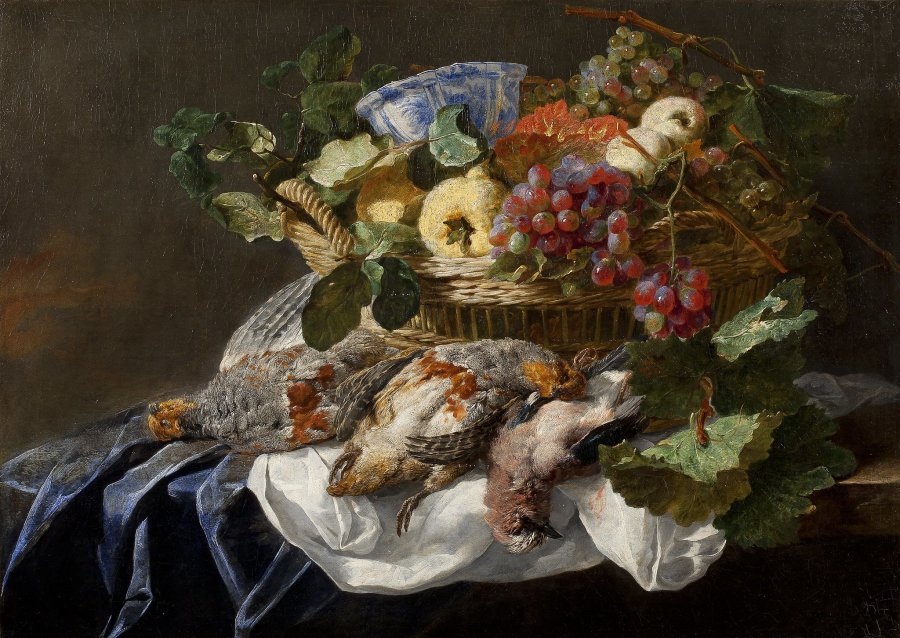Provenance
Collection of A. Langen ;
his sale, Riegner & Helbing, Munich, June 5, 1899, lot 35 ;
Private collection, Lille, France
Literature
F.G. Meijer, Stillevens uit de Gouden Euw , Boymans-van Beuningen Museum, Rotterdam 1989, p. 126
The son of an affluent merchant, Jan Fyt was born in Antwerp in 1611. He was
the pupil of Hans van den Berch in 1620-21 and later, of Frans Snyders, who
influenced his choice of subject, mostly game and animal still lifes, and his early
style, characterized by vigorous brushwork. Fyt remained with Snyders for a
year after becoming a master of the guild in 1629-30. He was recorded in Paris
in 1633 and 1634, and was active in Venice and possibly Rome before returning
to Antwerp by 1641. Following his return, he became one of the principal
figures of the Flemish Baroque School of still life painting. Fyt married there in
1654, and pursued a most industrious and successful career until his death on
September 11, 1661.
Fyt specialized in game still lifes; his subtle style evolved in a more painterly
and restrained manner than that of Snyders. This, and his emphasis on the
distinct values of texture and light, reveals the influence of Dutch painters,
especially Jan Davidsz. de Heem. During his career, Fyt collaborated with
Erasmus Quellinus, Thomas Willeboirts Bosschaert, and other figure painters,
and was also an engraver. The best of his numerous pupils was Pieter Boel.
Late in his career, Fyt began to enrich his oeuvre with a few boldly painted
flower pieces. Although he had incorporated flowers into his pictures since the
1640s, his primary focus had been on game still lifes and animal paintings, in
which fur and feathers are painted with obvious relish. In addition, bouquets of
flowers and baskets of fruit sometimes appear as subsidiary elements in
expansive natural settings. The artist seems to have preferred heavy, pendulous
blooms, rather than carefully arranged bouquets. In addition, his late paintings
frequently contain large, coarsely decorated architectural fragments, and are
often placed in front of a dilapidated wall.
The current work is an excellent example of Fyt’s still life oeuvre. As with
many of his larger still lives the notion of texture is important. Here the
combination of crisp white cloth, the feathers of the birds, the hard wicker
basket, the fruit and leaves and the hard but smooth Wanli bowl show us all
manner of texture possibilities. Fyt was a master of rendering these details,
particularly in the soft downy feathers of the birds as well as the color contrasts
of the different elements of the still life. He often used Chinese porcelain
painted in vivid blues to set off the other elements of the still life.
Mostly known for game still lives his masterly fruit compositions are no less
accomplished and display his unique stylistic talents. The influence of his
Flemish upbringing and particularly of Frans Snijders are all too clear in this
still life, which convey a sense of drama thought the elaborate arrangement of
fruit and rich coloring. Similar compositions exist of this type, notably the
example in the Philadelphia Museum of Art (inv.nr. 705). A copy of this
painting was on the market in France and is now in Lille.
